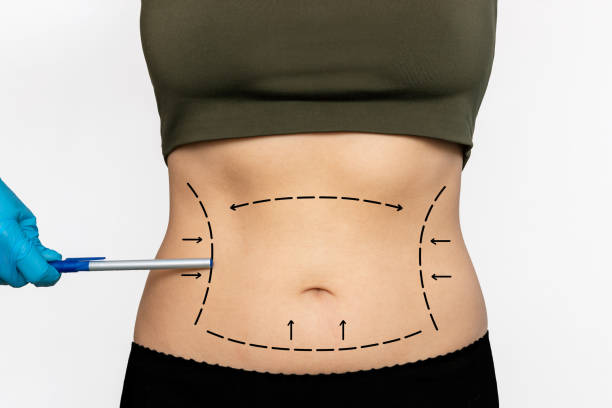Liposuction in Al Ain is a popular cosmetic surgery designed to remove excess fat from specific areas of the body, helping individuals achieve a more contoured appearance. In Al Ain, as in many parts of the world, this procedure has gained significant attention due to its effectiveness and the advancements in surgical techniques. This article will provide an in-depth look at the liposuction process, including what to expect before, during, and after the procedure.
What is Liposuction?
Liposuction, also known as lipoplasty or suction-assisted lipectomy, involves the removal of fat deposits from various body parts, including the abdomen, thighs, hips, arms, and neck. The goal is to reshape these areas, leading to improved body proportions and a more aesthetic appearance.
Types of Liposuction Techniques
In Al Ain, several liposuction techniques are commonly used, including:
- Tumescent Liposuction: This is the most popular technique where a saline solution containing anesthetics and epinephrine is injected into the targeted area. This solution helps reduce pain and blood loss during the procedure.
- Ultrasound-Assisted Liposuction (UAL): UAL uses ultrasound energy to liquefy fat cells, making them easier to suction out. This method is particularly effective for areas with denser fat.
- Laser-Assisted Liposuction (LAL): This technique employs laser energy to break down fat before it is removed. It often results in less bleeding and swelling compared to traditional methods.
- Power-Assisted Liposuction (PAL): In this technique, a motorized device is used to move the cannula, which can make the fat removal process more efficient and reduce the surgeon’s fatigue.

Preparing for Liposuction
Before undergoing liposuction, patients must schedule a consultation with a qualified surgeon. During this consultation, the surgeon will:
- Assess the patient’s overall health and discuss their medical history.
- Evaluate the areas of concern and discuss the patient’s goals.
- Explain the different liposuction techniques and recommend the most suitable option.
- Provide pre-operative instructions, including dietary restrictions and medication adjustments.
Patients are typically advised to stop smoking and avoid certain medications (such as blood thinners) to reduce the risk of complications.
The Liposuction Procedure
On the day of the procedure, patients can expect the following:
- Anesthesia: Depending on the extent of the surgery, either local anesthesia (for smaller areas) or general anesthesia (for larger areas) will be administered.
- Incisions: Small incisions are made in the skin near the treatment area. The size and number of incisions depend on the liposuction technique used.
- Fat Removal: Using a cannula (a thin tube), the surgeon will suction out the excess fat. The surgeon may move the cannula in a controlled manner to break up the fat before removal.
- Closing Incisions: Once the desired amount of fat has been removed, the incisions will be closed with sutures or adhesive strips.
Recovery After Liposuction
Recovery times can vary depending on the individual and the extent of the procedure. However, some common post-operative experiences include:
- Swelling and Bruising: It’s normal to experience swelling and bruising in the treated areas. This usually subsides within a few weeks.
- Compression Garments: Patients are often advised to wear compression garments for several weeks to minimize swelling and help the skin conform to its new contours.
- Pain Management: Mild pain and discomfort can be managed with prescribed medications.
- Physical Activity: While light activity is encouraged shortly after the procedure, patients should avoid strenuous exercise for several weeks to allow for proper healing.
Potential Risks and Complications
As with any surgical procedure, liposuction carries some risks, including:
- Infection: There’s a risk of infection at the incision sites.
- Scarring: Although incisions are small, some scarring may occur.
- Fluid Accumulation: Seromas (fluid buildup) can occur under the skin.
- Changes in Sensation: Some patients may experience temporary or permanent changes in skin sensation.
Long-Term Results
Liposuction provides immediate results, but it’s essential to maintain a stable weight for the best outcomes. Patients are encouraged to adopt a healthy lifestyle, including a balanced diet and regular exercise, to preserve their new body shape.
Conclusion
Liposuction in Al Ain has become a trusted option for individuals looking to enhance their body contours. With advancements in techniques and a focus on patient safety, many are achieving their aesthetic goals. However, it’s crucial to consult with qualified professionals to ensure the best possible results.
FAQs
- Is liposuction suitable for everyone?
Liposuction is best for individuals who are at or near their ideal weight but have localized fat deposits. A consultation with a surgeon can determine suitability. - How much fat can be safely removed during liposuction?
Generally, surgeons recommend limiting fat removal to around 5 liters at a time to minimize risks. - What is the typical recovery time for liposuction?
Most patients can return to normal activities within a week, but complete healing may take several weeks. - Will I have visible scars after the procedure?
While incisions are small and often placed in less visible areas, some scarring may still occur. - Can liposuction remove cellulite?
Liposuction is not primarily designed to treat cellulite. Other treatments may be more effective for this concern. - Are the results of liposuction permanent?
The fat cells removed during liposuction do not return, but remaining fat cells can expand with weight gain. - What should I look for in a liposuction surgeon?
Ensure the surgeon is board-certified, has extensive experience in liposuction, and has positive patient reviews. - Can I combine liposuction with other procedures?
Yes, many patients choose to combine liposuction with other cosmetic procedures for comprehensive results. - What should I do if I’m unhappy with my results?
If you’re dissatisfied with the results, consult your surgeon to discuss potential corrective procedures or options. - What is the cost of liposuction in Al Ain?
The cost varies depending on the extent of the procedure, the technique used, and the surgeon’s fees. A consultation will provide a more accurate estimate.
